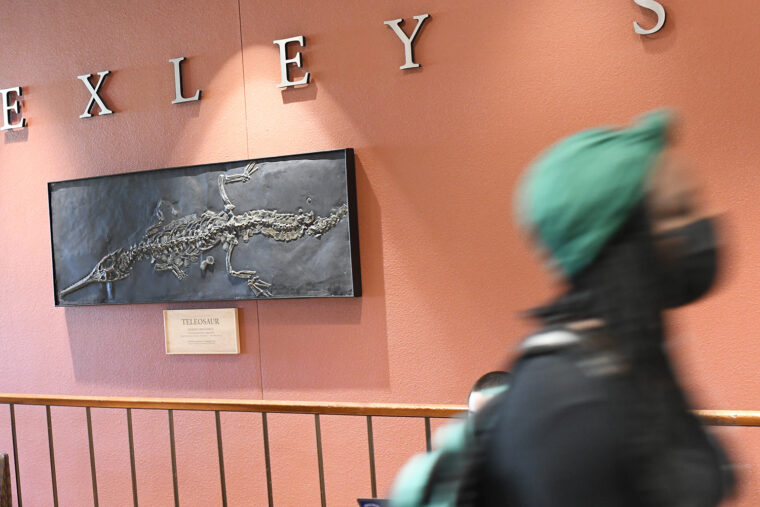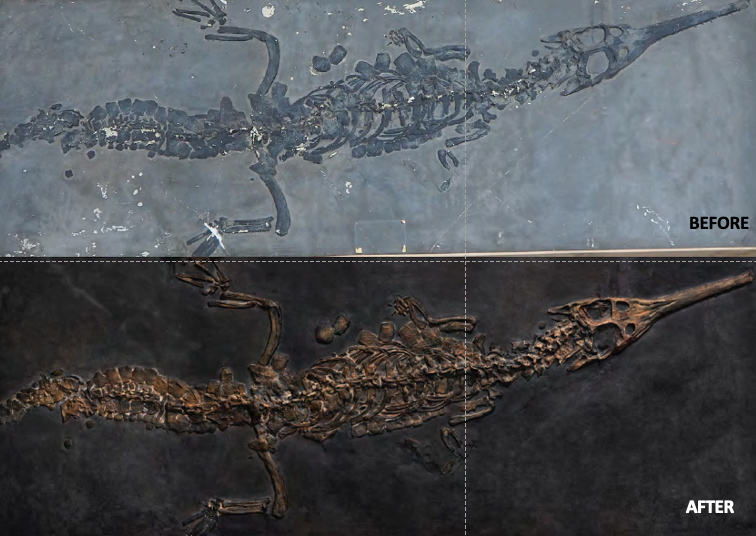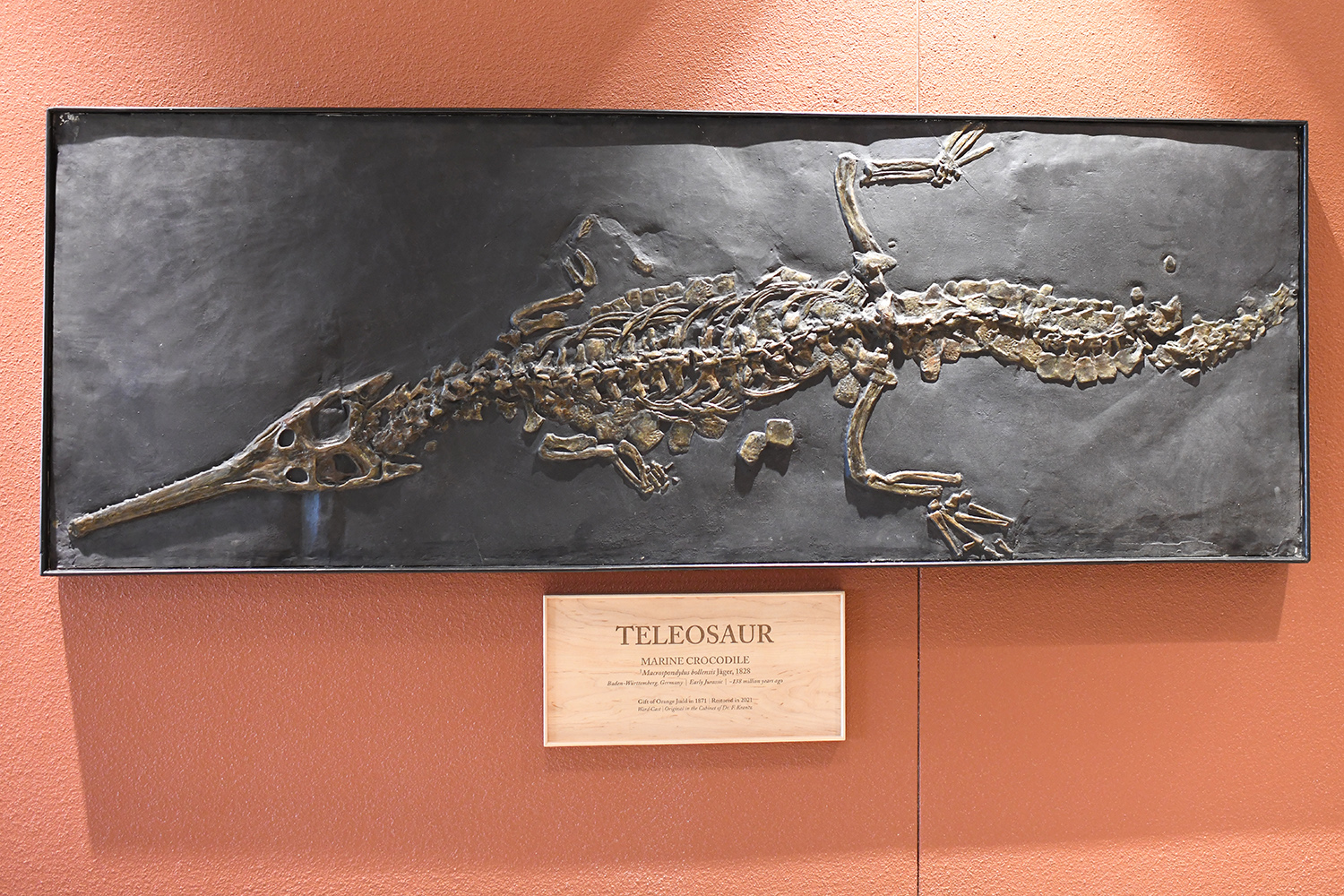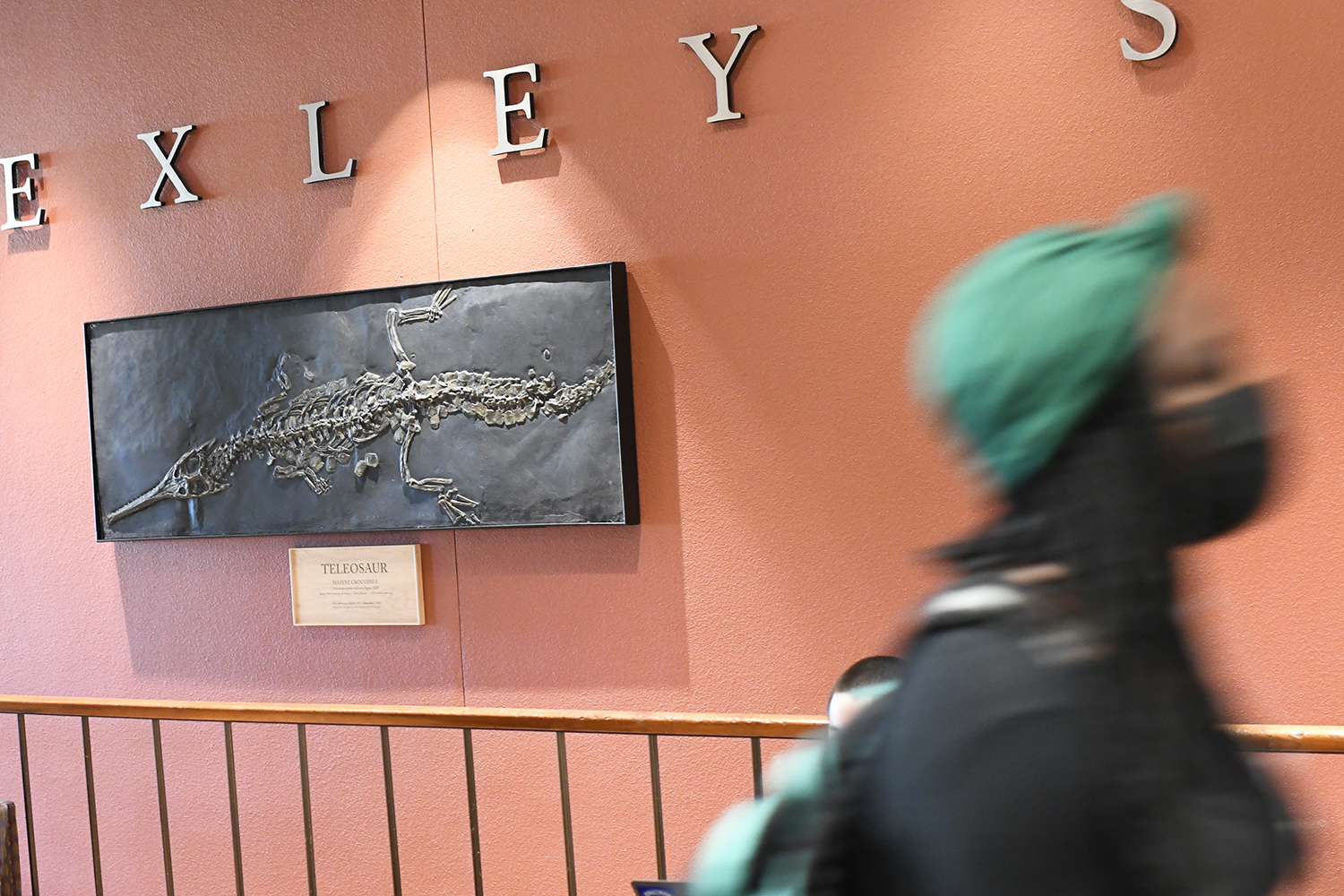Sea Dwelling Teleosaur Restored and Displayed in Exley Science Center


A 7-foot-long extinct marine crocodile has finally found a permanent home on Wesleyan’s campus—exactly 150 years after it arrived.
Known as a Teleosaur (Macrospondylus bollensis), the sea-dwelling lizard lived during the early Jurassic period, approximately 180 million years ago. A cast was gifted to Wesleyan in 1871 by chemist Orange Judd of the Wesleyan Class of 1847, and the namesake of the University’s Orange Judd Museum of Natural Sciences.
When the museum closed in 1957, more than 900 animal casts, including the Teleosaur, were moved into storage in random locations throughout campus.

Over sixty years later, the Teleosaur cast was discovered in a large packing case in the Exley Science Center penthouse.
“When we unpacked it, it was still in reasonable shape. There weren’t many cracks, but the paint on its surface was badly damaged and there were many white spots,” said Ellen Thomas, Harold T. Stearns Emerita Professor of Integrative Sciences, Smith Curator of Paleontology of the Joe Webb Peoples Museum of Natural History.
Thomas, along with Yu Kai Tan BA/MA ’21 and Andy Tan ’21, is spearheading efforts to restore and display the hundreds of artifacts placed in storage following the natural sciences museum’s closing. All restored casts become part of Wesleyan’s Joe Webb Peoples Museum.
The restored Teleosaur was originally exhibited alongside another 22-foot-long Teleosaur which—as seen in archival photos—was built into the wall of the museum.
“That large specimen was destroyed when the wall was blasted to pieces during renovations to the building but this one, thankfully, survived,” Yu Kai Tan said.
The team began working on it during the first phase of COVID-19 lockdowns in March 2020 and finished the restoration in May 2021 with the help of student curators, Cole Goco ’23 and Vivian Gu ’23. They used compressed air for the general dusting of the specimen and consolidated the cracks with archival resin. The missing paint flecks were filled in, then the entire specimen was retouched with colors that reflect the color of the original fossil.
“When these casts were custom-made for Wesleyan in 1871, they were rather simply painted with available paints at hand. Our restoration with modern reversible archival paints creates a better visual relief and more accurately reflects the original specimen from which the cast was made,” Tan said.
To top it off, they applied several coats of UV-resistant archival varnish to stabilize the paint surface and protect it from fading.
According to Henry Ward’s Catalogue of Casts of Fossils from 1866, the Teleosaur’s jaws were “armed with numerous long, slender, sharp-pointed, slightly curved teeth” and the hind limbs were “longer and stronger” than the forelimbs, “which indicated that the T. was a better swimmer” than the modern-day crocodile and likely “lived more habitually in the water and less seldom moved on drylands as its fossil remains have only been found in the sedimentary deposits from the seas.”
The Teleosaurus joins several other recently-restored creatures from the Joe Webb Peoples Museum and Collections including a single-tusked walrus skull, a restored taxidermied peacock, a Mosasaur marine lizard cast; an armadillo-like Glyptodon cast, and the “terrible beast” Deinotherium cast. The casts are used frequently for outreach and teaching.
Funding for the restoration projects is supported in part by Henry Monmouth Smith (1868-1950), a former Wesleyan chemistry professor well known for his book on Gaseous Exchange and Physiological Requirements for Level and Grade Walking, and Torchbearers of Chemistry. Smith left money to Wesleyan “to use and apply the income for the care, maintenance and increase of the collections in its Museum of Natural History.”
View additional photos of the restored Teleosaur below: (Photos by Olivia Drake)



